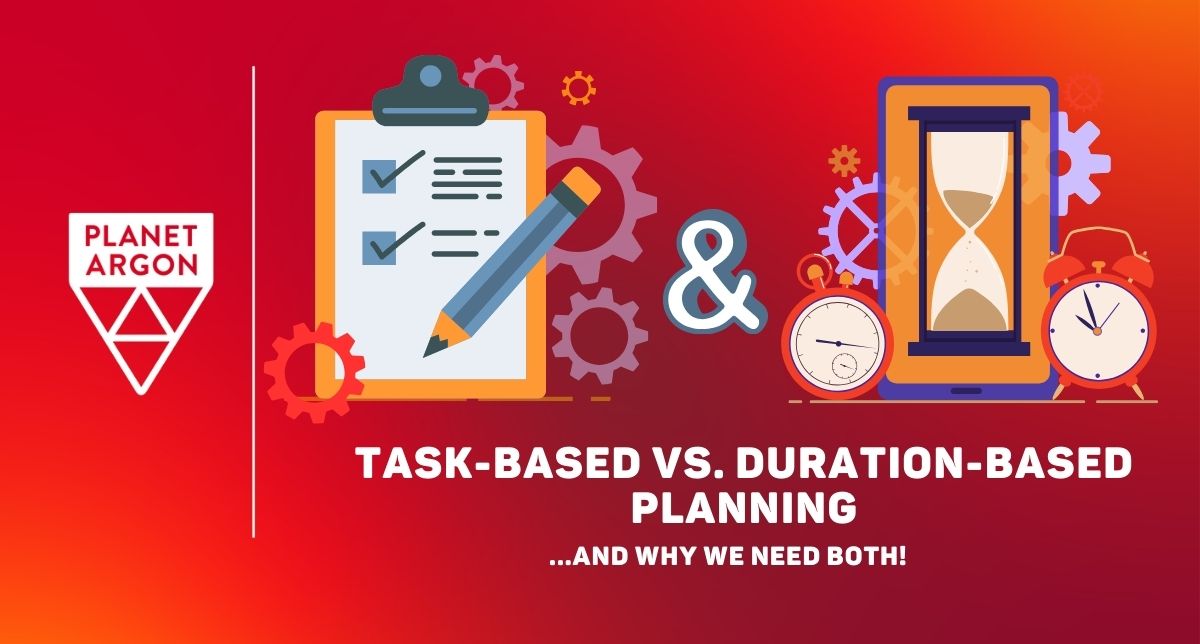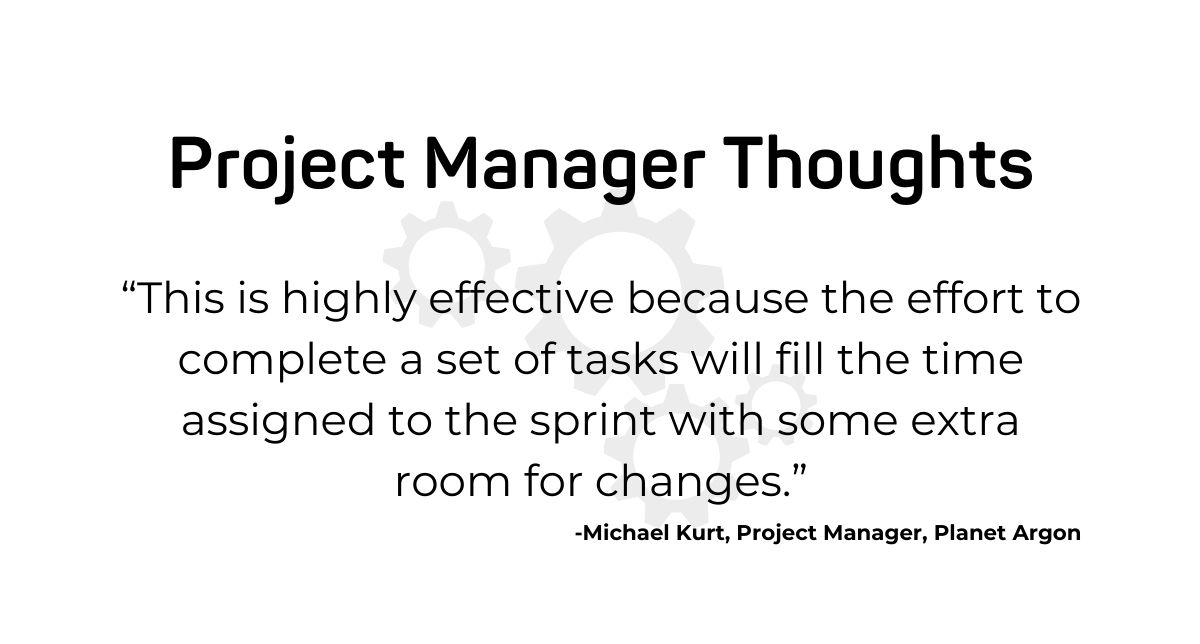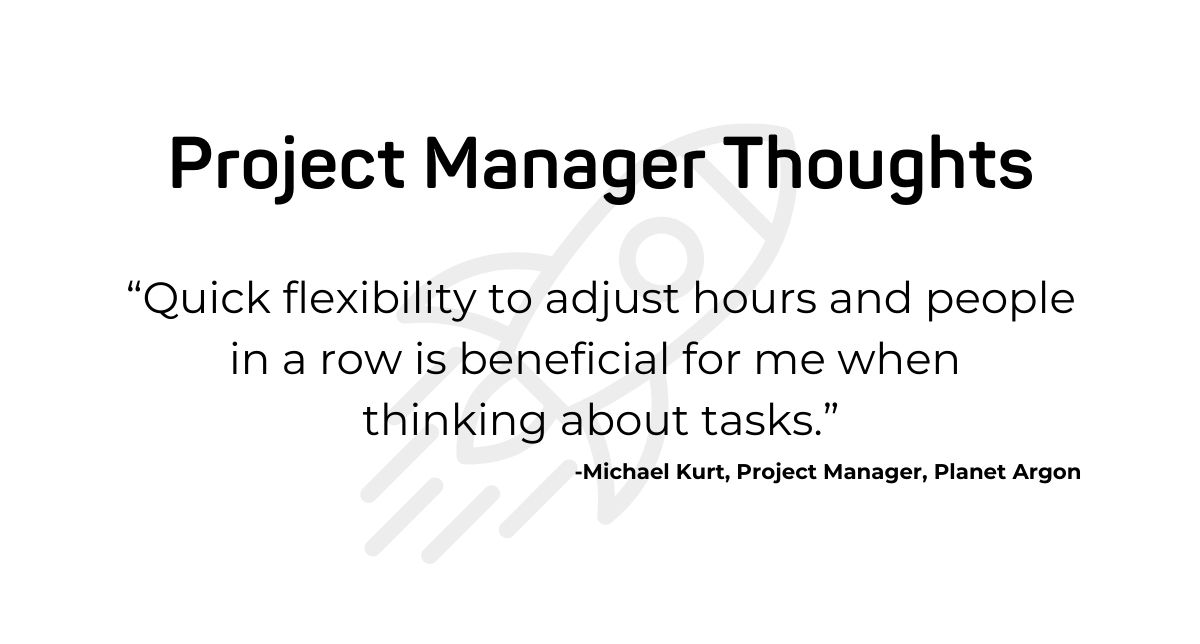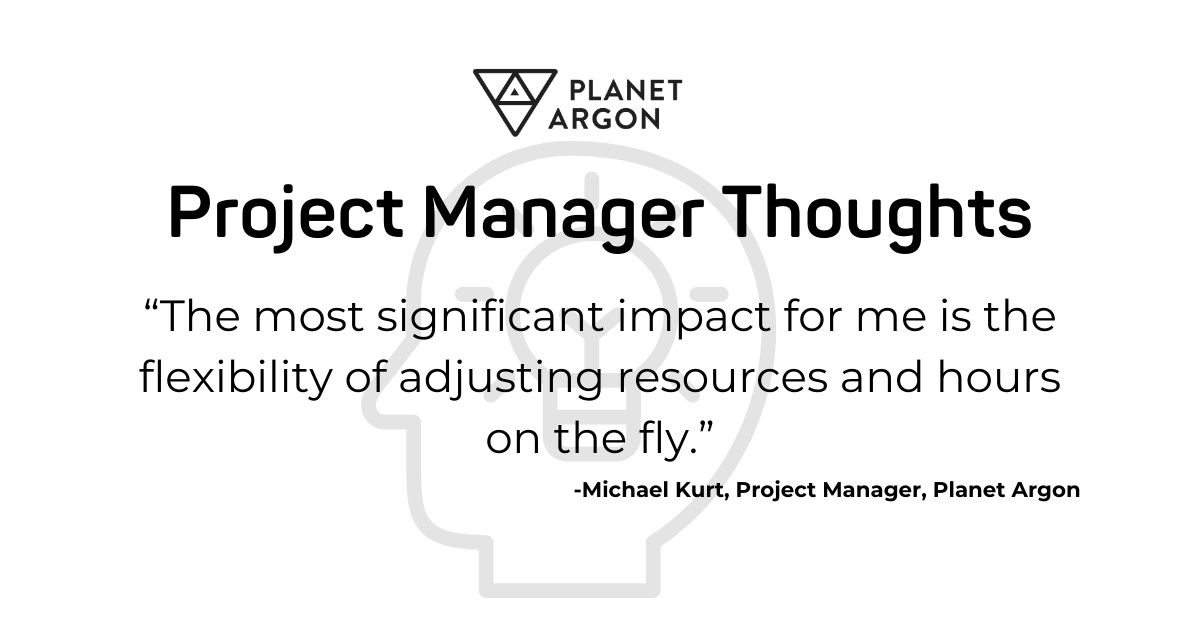Task-Based vs. Duration-Based Planning with Parallax and Jira
Reading time: ~ 5 minutes

Finding the balance between task-based planning and duration-based planning can be a struggle for any agency. Project requirements inflate, deadlines get pushed up, emergencies happen, and then suddenly, your beautiful plans start to look a little wobbly. It happens! We can use Jira for a lot of our planning, but with a tool like Parallax, moving resources can be done quickly, and the results will automatically trickle down into many different views and reports.
Before we discovered Parallax, we relied on spreadsheets and task-based planning. But this system created some challenges:
- We couldn’t see specific project and financial impacts in multiple scenarios or shift resources quickly.
- There was a big disconnect between the pipeline of work and the availability of resources in the upcoming week or month, especially if projects were in flux.
- This meant the predictability of resourcing and forecasting was a daily struggle.
- Some budgets were very small, making it extra challenging to match tasks to hours to budget to the people performing tasks.
In moving to Parallax, a few of our most time-consuming resource planning and forecasting challenges are resolved!
- It’s now much easier to see the resources in real-time alongside the pipeline of projects and budgets.
- Because Parallax pulls in real-time actuals, we can check our projects today and make adjustments for tomorrow on the fly.
- No more worrying about clunky spreadsheet logic.
- We can now generate templates for common services.
- We can foster more team collaboration.
But! While duration-based planning (Parallax) has given us fresh tools to optimize our operations, we don’t rely entirely on it. We also utilize task-based planning (Jira).
You might wonder why we need both for managing our Ruby on Rails clients, so here are some differences between the two types of planning and real-world examples of how and why we use them.
Task-Based Planning with Jira
What is task-based planning?
Task-based planning is a method of collecting work that involves taking individual issues in Jira and allocating them to the person(s) doing the work. This process works well if you’re working with clear assignments and features that a company then packages into a bid.
Task-based plans have durations, but these are often seen as Story Points that use an effort-based system instead of an hours-of-work duration.
How we plan task-based project work
We use task-based planning to estimate work on features. Specifically, this is most useful for feature iterations where we’re working to improve a specific aspect of a site with very clear goals.
In Jira, our Story Point values are associated with a range of hours. This range of hours is then translated into project cost estimations. For example, one story point = 1 hour, two story points = 4 hours, etc. In this way, we turn our task-based plans into duration-based plans.
Benefits of task-based planning
The benefit of task-based planning is that there are clear feature sets of items to do with a start and end that can be estimated against.
Real World Example
An accessibility audit is a good example of a task-based approach to planning a project because it has a specific goal: audit accessibility features and produces a report. There is a start and end point that delivers a particular outcome.
Duration-Based Planning with Parallax
What is duration-based planning?
Duration-based planning is a vital part of the Agile framework for software development. It allows work to be structured in an amount of time instead of particular tasks. Good duration-based planning saves time on onboarding and getting ramped up on a new project; it also reduces context switching by dedicating a percentage of an engineer’s time to a client project.
For an agency with many clients and priorities, this method helps build knowledge on a client’s application and build context knowledge.
How we plan duration-based project work
At Planet Argon, we use duration-based planning most clearly in sprints. A sprint is a dedicated 2-week period of focused work that often involves frequent, short meetings, client collaboration, and multiple team members all working towards a clearly defined goal. It takes the tasks in a feature or area of development and bulks them together into a timeframe.
It reduces the burden of constantly monitoring task times and budgets and allows the team to be flexible with solutions to the assigned tasks.

Benefits of duration-based planning
The benefits of a duration-based plan become clear when the team begins working on the actual tasks of the sprint. In software development, it’s not uncommon to estimate tasks in a level-of-effort range, which loosely translates to a range of hours.
But if a task is at the low end of the estimate, that team member could complete more tasks than planned.
When we schedule an engineer for a duration, instead of a specific task-based plan, they are freed up to jump to another task previously assigned to a teammate. It makes the team flexible and efficient and allows time for discovery.
Another helpful benefit is that Parallax allows us to build a template for duration-based projects that we can repurpose on future client engagements. This saves us a lot of time!
Every sprint will have roughly the same amount of time allotted in hours and require approximately the same amount of resources to complete. Standard meetings and milestones are also built into a sprint plan, making it a much more efficient way to plan.
With this template in the sales pipeline, we can get close to the correct estimate without starting from scratch every time and scrambling to see if we are available to take the sales opportunity.
Real World Examples
We work for several clients with limited retainer budgets. These budgets are a dedicated amount of time per month that are predictably reserved for maintenance, updates, and security patching.
As a project manager, I’m tasked with ensuring the resources can effectively cover both the ongoing retainer budgets and the project-based budgets to meet our goals.
Duration-based plans allow me to quickly dedicate a developer a percentage of time (and budget) to a project without worrying about the specific tasks they will be assigned.
This is important because a small team of developers can be resourced quickly, especially in the Shaper Tool in Parallax, and then adjusted to fit all projects.
Another example of how we’ve used the Shaper Tool is that one of our contractors recently moved on to work full-time for another company. During this transition, it was easy to go into the Shaper and remove that contractor from the planned row (keeping the “role” he was in) and then place someone else in that position while retaining the hours.

Why We Need Both
On a larger scale, when a duration-based plan is set across all of the company’s projects and clients, we can look at project availability and the pipeline months in advance because we know that a certain percentage of time will be assigned to a person every month until the contract ends.
Then, if the project requires it every week, a task-based plan can be broken down inside the duration plan as the specific tasks and goals come into focus.
Not all projects can be planned using duration-based planning. We still utilize task-based planning for projects with shorter duration or highly specific tasks.
Thanks to Parallax!
Before Parallax’s resource planning and management, we’d have multiple spreadsheets and programs open to see the available budgets, tasks, and development resources to find a solution for the month’s projects.
Finding the right balance of accuracy took hours between manually updated spreadsheets and automatically updated budget sheets!
Task-based planning alone was still too limiting for accurate planning and forecasting.
Now that we utilize Parallax, everything is visible on the same set of screens and updates quickly. Duration-based plans are much easier to grasp when the data can be quickly adjusted, and values like the budget cost and margin are updated for every project impacted by the change.
For an agile company, there is immense value in iterating on a plan in real-time and seeing the downstream effects of those changes.
Plus, as we gain more experience using Parallax, our work and budgets are much more predictable.

If you’re curious about learning how to make your existing Rails app more efficient and more maintainable, check out our consulting services.
What Else Can Jira Do?
We've compiled our best Jira help articles so you can easily find more ways to use Jira in your organization.